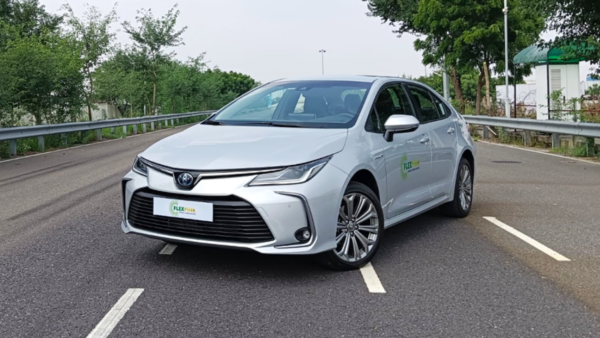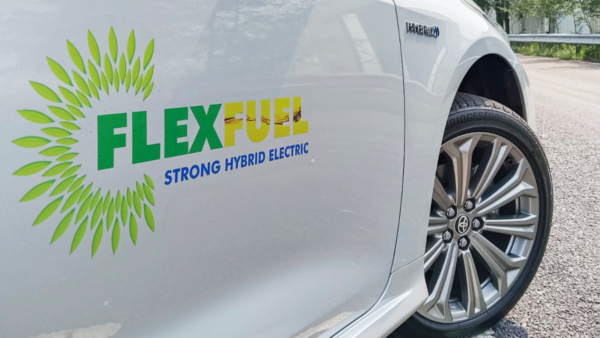Petrol in India currently has a 10% doping ratio of ethanol and this has helped save money and cut emissions. This number is expected to go up to 20% by 2025 as the government pushes for flex-fuel. India’s Minister of Road Transport and Highways Nitin Gadkari has been particularly vocal about the multi-pronged benefits of adopting flex-fuel and there seems to be good reason for this.
With the 10% ethanol blended fuel that we get now, India was able to save/replace 26 million barrels of petrol. In the last eight years, ethanol blending This has resulted in a saving of Rs 41,500 crore. In 2020-21 alone, Rs 10,000 crore was saved from ethanol blending.
To get a better understanding of Toyota’s objectives behind this pilot program, we talked to Vikram Gulati, Country Head and Senior Vice President, Toyota Kirloskar Motor. He told us that as India moves towards E20 (20% ethanol) blending, we can expect our fuel-savings to increase to Rs 30,000 crore per year. In barrel numbers, the savings would be around 86 million barrels in 2024-25.
(Left) – Mr. Vikram Gulati, Country Head and Senior Vice President, Toyota Kirloskar Motor
Speaking about the environmental benefits of using flex-fuel, he said that in the last eight years, ethanol blending has resulted in reduction of 27 lakh metric tonnes of Greenhouse Gas (GHG) emissions. With E20 blending, this figure is expected to go up to 10 million metric tonnes a year. Even 2.5 PM emissions can be as low as 14% compared to petrol.
Elaborating on the environmental benefits, Gulati said that “Ethanol is a carbon neutral fuel and this is a huge positive as it gives you the lowest carbon emissions on a well-to-wheel basis. It is important to calculate the impact. Environment, for example, the carbon emissions for this flex-fuel Corolla are around 29 grams per kilometer. Just to give you a benchmark, an EV emits somewhere around 70-80 grams of carbon emissions per km does.”
It should be noted that the E10 does not require the existing vehicles to undergo any modifications, however, the upward move will require changes to the electronics, hoses and a few other parts in the car. Gulati said that while the cost is not huge, it is also not unheard of, but when you take into account the large number of vehicles in India and divide the development cost of the carmaker accordingly, the cost per car will not be very high. . “Furthermore, higher blends such as the E85 provide better torque and power, although fuel-efficiency can drop by about seven percent, in some cases up to 30%. To offset this loss, we have Flex-Fuel is coupled with our robust hybrid system. This combination not only enhances fuel-efficiency but also significantly reduces emissions compared to the standard E85 petrol only vehicle.”

Brazilian Spec Toyota Corolla FFV-SHEV
Asked about car makers and sources to make ethanol other than sugarcane, Gulati said, “In India, we are already seeing second generation plants under construction. These units will produce ethanol from waste. One in Panipat. The plant is coming up.Will be able to produce huge quantities of ethanol from stubble or stubble, which is a major source of pollution in the country as farmers burn it after the harvesting season.Therefore being a source of pollution many crop waste. Apart from this, stubble and other sources will turn into an additional revenue source for farmers. One plant is coming up and 11 others are planned by February 2023. Of the 26 million tonnes of stubble accumulated every year in the country, about 24-25 million Tons will be processed in these plants.”
While the flex-fuel projections seem quite encouraging, it should be noted that the government and many carmakers are pushing electric vehicles quite strongly. In such a situation, flex-fuel may not find enough buyers in the near future if electric vehicles take off at higher speeds. Responding to this, Gulati said, “We currently sell around 35 lakh cars per year and if we remove 2 per cent of the vehicles from that, the number goes up to 70,000 EVs. Compared to the 2030 market size estimates, which There will be about 8 million cars and even with an ambitious government plan to electrify 30 percent, we’ll still be selling 1.5x or 1.8x fossil-powered cars compared to today. So adopting FFV will give us a bigger percentage of those ICE vehicles. may help to change to a more environmentally-friendly one.”

While electric vehicles (EVs) are a straight-forward solution for many European countries, India may not shift from petrol/diesel to EVs in the next few years. That said, as the world’s second most populous country, we also cannot escape the responsibility of reducing emissions. Therefore, the solution for India may not be a single technology but a combination of different fueling technologies.
Clearly, Toyota has big plans for flex-fuel paired with its robust hybrid system. On paper, the numbers and reasons seem to favor mixed technology. However, it will be interesting to see how the pilot project by Toyota pans out as well for our first drive review of the Toyota flex-fuel robust hybrid car tomorrow.
Tell us your thoughts on the potential of flex-fuel combined with a hybrid and if you would buy such a vehicle and how much more would you be willing to pay for it.